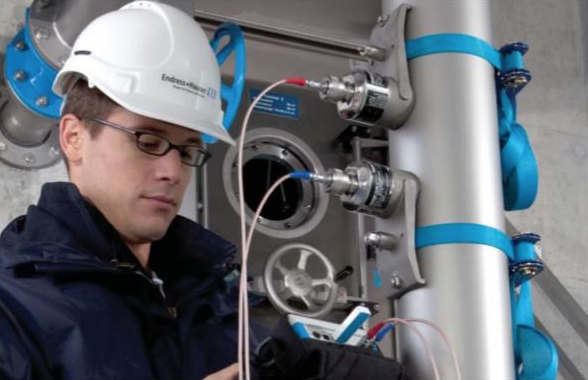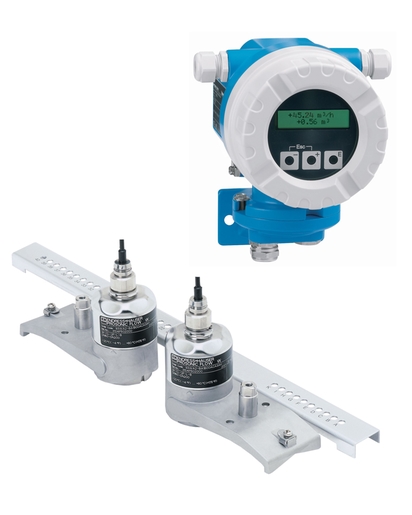 PRODUCTOS ENDRESS+HAUSER CAUDAL
PRODUCTOS ENDRESS+HAUSER CAUDAL
El caudal ya sea volumétrico o másico es una de las variables más medidas en los procesos industriales. Agua, gas natural, vapor, petróleo, productos químicos y aguas residuales son sólo algunos ejemplos de los distintos líquidos que se miden a diario. No existe una tecnología universal apropiada para todas estas aplicaciones. En ECN Automation estamos a su disposición para asesorarlo sobre el caudalímetro y tecnología más apropiados para sus necesidades.


Caudalímetros Ultrasónicos
Principio de medición
Este método utiliza dos sensores, colocados uno frente al otro en el tubo de medición. Cada sensor puede transmitir y recibir señales ultrasónicas alternativamente, mientras mide simultáneamente el tiempo de tránsito de la señal. Tan pronto como el fluido en el tubo comienza a fluir, las señales se aceleran en la dirección del flujo pero se retrasan en la dirección opuesta. El tiempo de tránsito diferencial, medido por los dos sensores, es directamente proporcional al caudal.
VENTAJAS
Medición independiente de presión, densidad, temperatura, conductividad y viscosidad (para fluidos homogéneos)
Sección de tubo libre, sin pérdida de presión, disponible versión clamp-on con instalación externa a la tubería sin interrupción de proceso
Sin piezas móviles, mínimo mantenimiento y costo de pertenencia
Precisión de medición desde ±0.3% hasta ± 2% dependiendo de la versión
Diámetros nominales disponibles DN15 a DN4000 (1/2 a 160”), -40 a 200°C
Larga vida útil, sin abrasión ni corrosión del fluido en versión de montaje externo
Diseño en línea o con abrazadera para mediciones de flujo estacionarias o temporales
PRODUCTOS
Prosonic Flow W
Aplicaciones estándar
Prosonic Flow P
Aplicaciones de proceso
Prosonic Flow F
Aplicaciones Ind. química o energía
Prosonic Flow B
Aplicaciones de gas metano / biogas
Prosonic Flow T
Aplicaciones portátiles o temporales
Prosonic flow E
Aplicaciones estándar en líquidos
Prosonic flow G
Aplicaciones en gas natural con condiciones cambiantes
